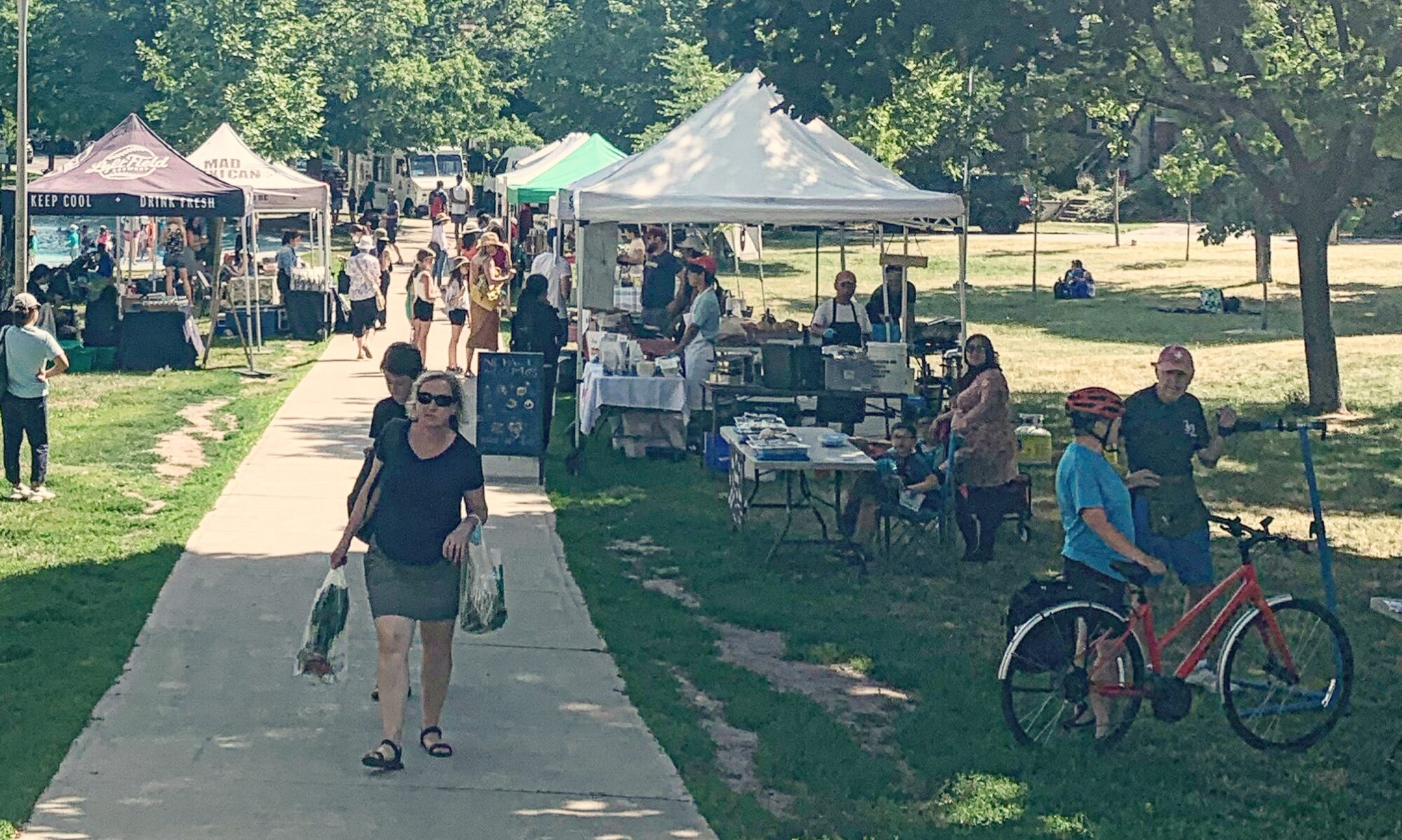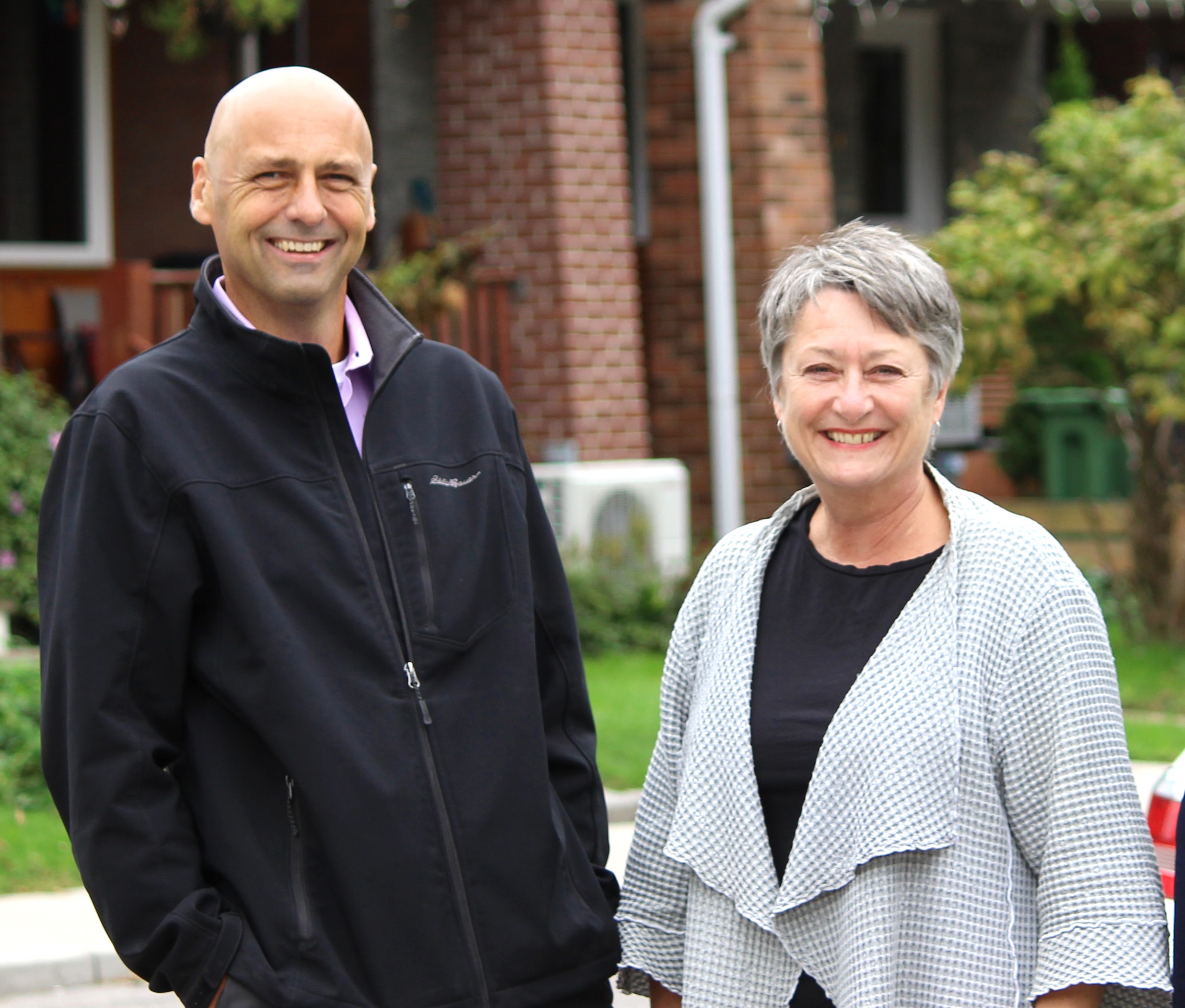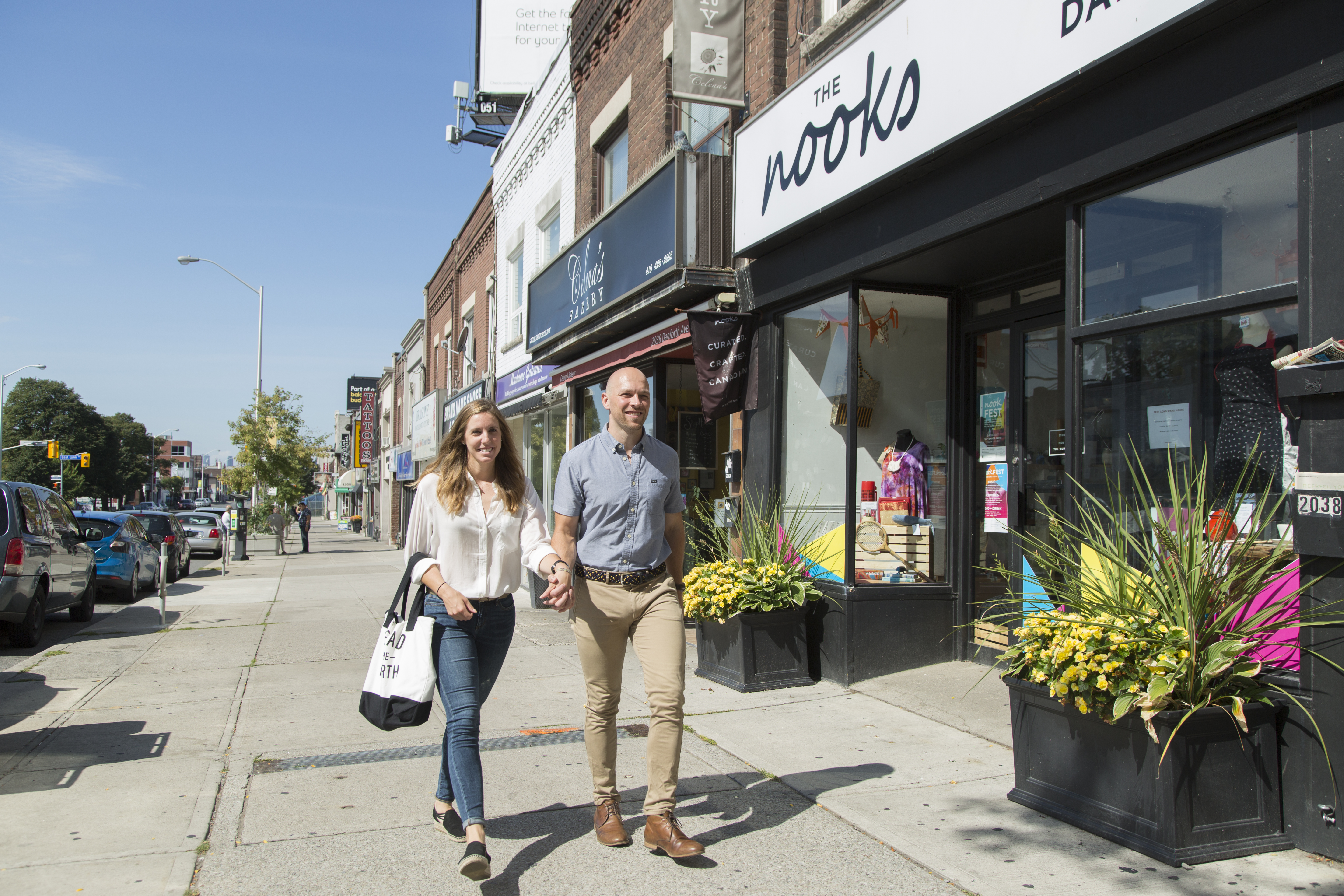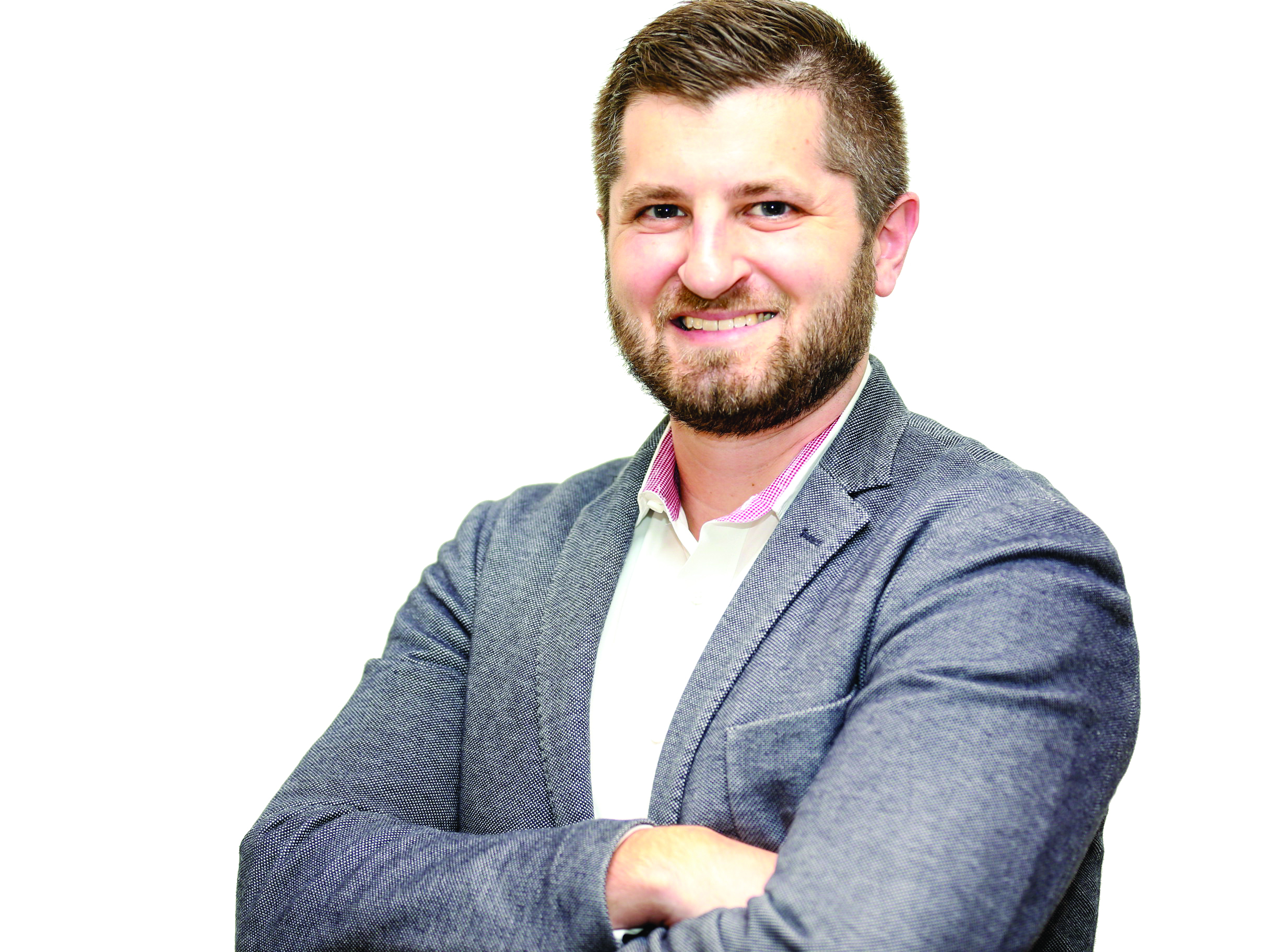As we indicated in our recent blog post, DECA posed the same questions to every Ward 19 City Councillor candidate with a published email address (on the city election website). We are publishing their replies in the order that we receive them.
Meet: Diane Dyson
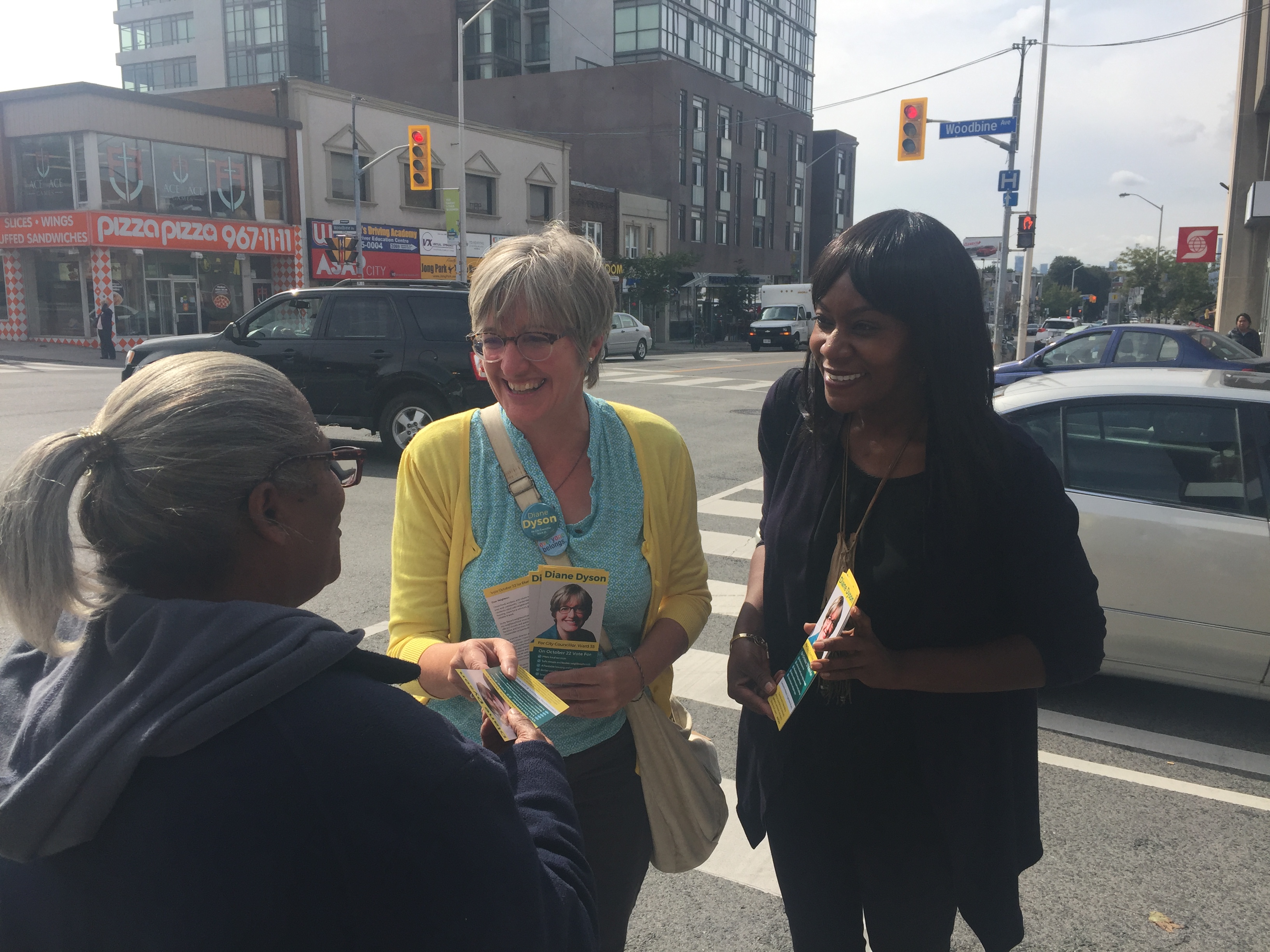
1. What makes you the best person to represent the Danforth East area?
I am a proud East-Ender in this great city of ours. I’ve lived in the East End for almost thirty years and raised my family here as a single mum. Even as a low-income family, we enjoyed a great library, recreational programs, affordable childcare, and quick access to downtown by public transit. We walked the boardwalk and ravines, picnicked in our local parks, swam in our local pools. So on a very personal level, I know that well-funded public services in every neighbourhood are what make this city welcoming for all.
Over the past two decades, my professional work has focused on ensuring everyone has the same opportunity to revel in a vibrant city, safe and sustainable neighbourhoods where we can all live well and grow, and a community where everyone belongs.
In my day job at WoodGreen Community Services, I have had the chance to oversee work on immigrant and refugee services, wraparound housing programs, poverty reduction and commercial renewal through the Pop-Up Shops partnership with the Danforth East Community Association.
I have travelled internationally to train others on community-building, and I have been a mentor to people in the Community Foundation’s Vital People programs and the DiverseCity Fellow program.
I worked on the Strong Neighbourhood strategy and two reports on poverty at United Way Toronto. During the Harris years, I was with People for Education ensuring all kids have a fair chance, even as funding cuts came.
In each of these roles, my secret superpower has been focusing on concrete solutions to the challenges people face. Under my leadership, we have fought for and won the elimination of the vacant storefront tax rebate, created resource supports for inner city schools and, later, for community hubs. I have mapped out and then coordinated better services for immigrants, children, families and older adults.
I am running for City Council because I know the issues here from the ground up: I have done the research, studied the evidence, and developed the policy recommendations. We know what we must do: We must feed the hungry, shelter the homeless, and comfort the lonely. Yet change is slow.
I am tired of trying to convince politicians and political insiders to have the courage to act. It has become clear to me now that research reports, political strategies, and community-level advocacy can only do so much.
We need a Councillor with the political will to move to action. We need a Councillor to build the city we all want to – and can – live in. We need our ward Councillor, and the wider Council, to represent us.
I am not a political insider, but I am a city-builder. I have worked across governments at the staff and political levels to create positive changes in our community. I want to represent us all.
2. What do you think is the most pressing issue for this area, and what is your plan to address it?
If elected, I will be a champion for issues important to building strong neighbourhoods in the east end:
First is addressing quality, affordable licensed childcare and programming for youth. Publically-supported programs are in very short supply, and families are having to patch together care. As a single mother who relied on these programs and funding, this is personal.
If elected I will work with parents, child care advocates and community organizations to:
- Protect public funding for non-profit centres
- Expedite implementation of the Child Care Growth Strategy
- Keep City-operated child care services in current and new locations
- Broaden eligibility for fee subsidy to more families, particularly part-time and shift workers, and streamline the application and approval process
- Pay decent salaries to child care staff
Second is our natural environment – we need to protect our green spaces and waterways. Recent weather events, powerful storms and flooding in the city demand that we respond. As Harrison Ford once said, “We need nature; it doesn’t need us.” Our city must protect environmentally sensitive areas, the quality of our water, the flora and fauna. The City’s Ravine Strategy lays out a carefully negotiated vision for how we can get there. Work on the Resilience strategy should address some of the dramatic climate shifts we are seeing. And TransformTO, the City’s own climate action strategy, sets out the key goals we need to reduce emissions on a timed schedule. I will push to accelerate each of these strategies to action.
Third, we need to focus on housing. I hear this issue from local residents across the ward. City Council has some of the tools to make housing more affordable, many of which I have worked on:
- Nonprofit, supportive and co-op housing.
- Conversion of public land to mixed service/housing sites.
- Community hubs with housing (imagine seniors with a childcare).
- Landlord licensing.
- Inclusive zoning, second suites and laneway housing.
- Speedier planning processes, especially for non-profit housing.
While we will see little leadership from the province on this, the new National Housing Strategy directs funds to municipalities. A focus on housing for First Nations peoples is a strong area of focus and one which is important to me.
City Council also has within its powers the ability to provide more solutions. Let’s allow co-housing so that seniors or others who may be isolated can live with one another. Let’s ensure tenants receive the property tax rates owed to them as the commercial tax rate is changed.
Having spent the last six years on the board of the Federation of Metro Tenants Association (FMTA), and having worked for one of the city’s largest housing providers, I am ready to hit the ground quickly on these issues.
Other policy commitments are available at my website: dianedyson.ca
3. Who do you support for mayor, and why?
I have worked with both of the lead mayoralty candidates and am confident I can continue to work with either on a professional level. It’s what we do, always do, in the nonprofit sector.
I worked with John Tory on the City’s Poverty Reduction Advisory Table. It was through his initiative that TTC fares for children were eliminated. We pushed hard for an expansion within a short timeline.
I had the chance to work with Jen Keesmaat around our Pop-Up Shop initiative. She was a keynote speaker at our symposium on the topic where she spoke tellingly about the importance of strong neighbourhoods. I also worked with her on our advocacy case to the province around schools as community hubs. This was during a time when the City and the local schools boards didn’t even meet to do joint planning or information-sharing. We helped change that, and they have established a Committee and now meet regularly
Torontonians have a wide choice of mayoralty candidates from whom to choose. The broadened mayoral debates have invited new voices and new perspectives into the civic conversation.
On a personal level, when I vote, I will look for a representative voice.
4. DECA took the position that changing the ward boundaries during the election was undemocratic. What do you think about that?
I think DECA is very wise.
City Council regularly passes hundreds of items at its meetings. Most issues are ready for easy adoption as they have been vetted by Council Committees, staff and members of the public who have had the chance to comment beforehand.
This move was arbitrary and disruptive. For much of August, I focused on pushing back on this provincial change. While some of my opponents were busy campaigning in the new-to-them parts of the ward, I worked with other candidates from across the city to push back.
Whether you agree that Council should be reduced or is dysfunctional, almost every agreed the timing of the change was unfair to us all. The new provincial legislation gave no recourse for consultation and discussion. While lawsuits and court challenges are continuing, the new 25-Councillor format has been implemented for this election.
How will this changed Council look? At one of the emergency meeting of City Council, Councillor Mary Margaret McMahon gave us a hint, describing her workload, responding to local residents, attending community events, preparing for meetings and more. She summed it up, “The dog I gave my children when I was elected doesn’t even know me.”
So the expanded role of a ward Councillor will be heavy, but the issues and challenges we face as a City remain the same. So I am still running to represent Beaches East York.
One of the silver linings arising out of this turmoil is the wider discussion of how residents can be more closely involved at the local level. We may redefine our Community Councils. Having written the resident engagement guidelines for United Way’s priority neighbourhoods, and having seen DECA’s good work, I am committed to building strong and representative neighbourhood networks here in Ward 19.
5. We expect that our area will see a lot of development in the next four years. What do you think about that?
Two large areas of pending development are the Main/Danforth transit hub, where I live (and have been attending the City’s meetings on this for close to a year), and the very large site of the Coxwell/Danforth TTC Garage, where community members are already organizing. I would work with all local stakeholders to balance competing interests and demands. Our community’s interests must be as strongly balanced.
I believe the Danforth, as a main corridor, should support mid-rise development. What Toronto tends to see however is more “spiky” development, highrises in the middle of residential development). More human-scaled buildings are a better fit for our community.
Because we risk becoming an enclave, where only the richest folks can live, I would welcome development that provides affordable and alternative housing forms. (The definition of ‘affordable’ is a separate policy question, one I believe will be very important as the City develops guidelines around Inclusive Zoning.)
As a community, we have the opportunity to look at the specifics of each development. How many family-sized units are included? What do the street-level storefronts look like? Will the areas for commercial property offer opportunities for small-scale local retail? Can the second floor be used for offices or services? I am even concerned about environmental impacts, given that we are on a major bird migration pathway, such as whether the design is compliant with the City’s Bird-Friendly Guidelines?
While some development is certain,it is important for us to look at the impact of new developments on our surroundings. Do we have the proper infrastructure to support the development (everything from sewage to local school capacity)? What benefits can be derived from the developer for the local community? How will community interests and concerns be addressed during the development so as to minimize disruptions?
Development along the Danforth is coming. The provincial plan and the City’s own Main Streets strategies call for it. The area around Main and Danforth has also been designated as a transit hub by the province, so that means higher levels of density. Change is coming. What is left with us, at the level of local government and as a community, is the shape of that development and how we can plan for its impact.
6. How will you contribute to a more diverse and representative Council?
If Diversity is Strength, then my family is superhuman. We live at the intersection of much diversity. I am a single mother, who when they were young, had an annual income of $12,000 and a childcare subsidy from the City. My kids’ dad is Chinese, so I learned enough of the language to become close to my mother-in-law. My son and his dad, both born and raised in the East End, have been stopped and carded by Toronto police a number of times. My daughter is queer and her long-time partner has a disability. We live a very Toronto life!
My commitment to equity issues has been the driving force of my professional life – that is, the very Canadian belief that everyone deserves a fair chance and the truth that many of us don’t have the same opportunities. So I sat on and co-chaired the TDSB’s equity committee through most of my kids’ schooling. (I returned there recently for a reprise, to work specifically the Board’s Taskforce on Anti-Black racism.) I also went to enough grad school to learn the importance of an intersectional lens on equity issues, our responsibilities as allies, and understand my cross-class experience.
These learnings are deep in my bones.
But what will I do? On the first order, I will stand as a clear and vocal reminder of Toronto’s complicated and mixed diversity. Secondly, as I have in all my work, I will act as an advocate for inclusion. Even asking the simple question of who is not inside the room when we make decisions can be a radical act. Kicking open the door is even better. Third, I will push for positive change wherever I can. That means standing against police carding, that means interrogating the City’s hiring practices and staff training, and that means analyzing who benefits and who doesn’t whenever a new policy is proposed or a budget line item moved. It is what we called for when we pushed for the City to adopt its Poverty Reduction strategy; it is using a critical lens on city decisions.
This question is more important than what I can contribute individually. It is a question for all of us.
We know, because of the reduction to 25 Councillors and how incumbents are squaring off against incumbents, that our Council will not reflect the most basic demographic makeup of Toronto. By some counts, there will be at least 16 straight, white, able-bodied, cis-gendered men.
Now, there is an argument that this is okay because we may well have the most experienced and progressive Councillors there are to be had. Maybe that’s what the best look like.
But I cannot believe that old trope.
I cannot believe that old trope because, as we proclaim, diversity is strength. We are stronger when we each bring something different to the table.
Our City Council table is smaller now, so who is sitting at it matters.
I am ready to take my seat.
For more information:
Email: diane@dianedyson.ca
Campaign Office: 2084 Danforth Ave (at Woodbine)
Twitter: @Diane_Dyson
Facebook: https://www.facebook.com/DianeDysonforBEY/
Phone: (647) 352-2260
